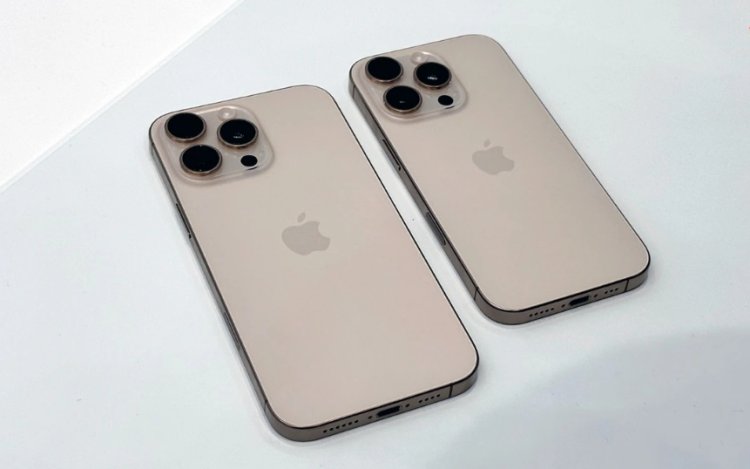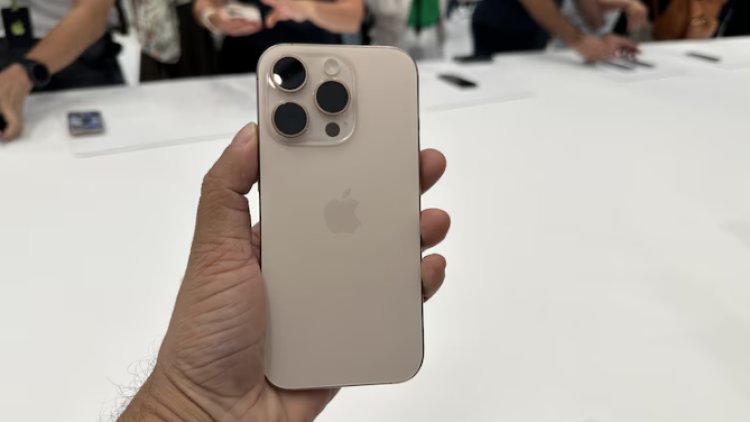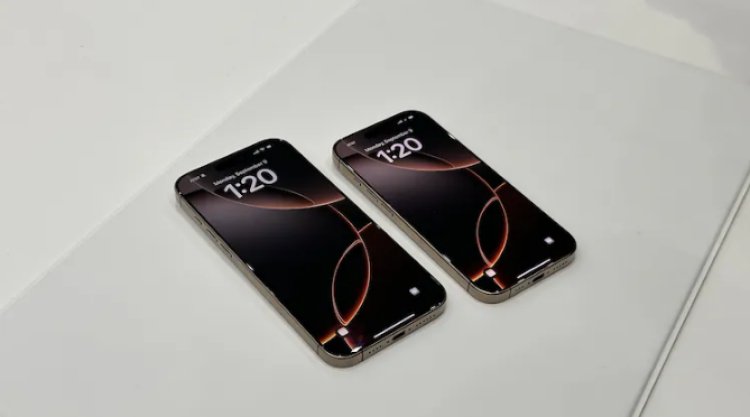Quick Review of Apple iPhone 16 and iPhone 16 Pro: What's New and Improved
iPhone 16, iPhone 16 Plus, iPhone 16 Pro, and iPhone 16 Pro Max are the newest iPhone models that Apple has released. Though they may appear similar, there are a few notable differences.

INTRO
- In India, Apple has released the iPhone and iPhone 16 Pro smartphones.
- At Rs 79,900, the iPhone 16 is available.
- The screens of the iPhone 16 Pro are now larger.
Apple doesn't make major changes, as I have frequently stated on these pages. Sometimes, while there are exceptions, it improves and modifies its products, making little but meaningful adjustments, if it isn't launching a whole new one. The phones that represent this strategy are the iPhone 16 and iPhone 16 Pro, which were unveiled last night at Apple's Glowtime event at Steve Jobs Theatre. I thought the iPhone 16 and iPhone 16 Pro didn't look all that different after looking at them in the demo area and using them for a very short while. Still, there have been a few notable improvements to these phones.
First, what hasn't changed. If I compare them to the iPhone 15 phones, the iPhone 16 and iPhone 16 Pro haven't changed much in terms of look and design. Same flat edges, same aluminum and titanium frame, same Ceramic Shield on both the screen and back. The differences, while slight, are pretty minor in terms of look and feel. The iPhone 16 now has vertically stacked camera lenses, so when the phone is held in landscape mode and its camera is used to record a video, both lenses can combine together to capture spatial footage.

The iPhone 16 also has two new buttons - the Action button, which was previously available on the Pro models. Additionally, the new camera button on all iPhone 16 phones is known by Apple as Camera Control. The screen size and resolution are the same, though Apple says the Ceramic Shield on the front is now 2X stronger than the shield used by Android phone makers and 50 percent stronger than the shield used by Apple previously.
So, the iPhone 16 is the same good old iPhone in terms of look and feel. However, there are two big changes inside: one, the iPhone 16 has 8GB of RAM. Presumably the phone needs this to run Apple Intelligence aka Apple's generative AI tools. And two, the phone is powered by the A18 chipset,According to Apple, improved cooling is a feature of the iPhone 16. This should improve long-term performance. While we will get to know more about the iPhone 16's performance once we - and users in general - start using the phone, Apple did stress that it supports ray tracing in games. Ray tracing now requires a heavy workload.
Apple has also disclosed that, despite the absence of a telephoto lens, the iPhone 16's rear camera system now offers zoom capabilities up to 2X. Rather, Apple's zoom is achieved through the same software techniques and cropping that Google employs on the Pixel 9. We'll examine this in more detail throughout the review as well.
The other big change in the iPhone 16 is its new colors. When I saw them in the demo zone, I liked the ultramarine color the most. But I think users will also like teal and pink.
Meanwhile the camera module in the iPhone 16 Pro is the same as it was on the Pro models before. However, the modifications are more, uh, visible in terms of design and appearance. The displays are larger. Even so, the sizing is a little off. Apple is achieving this by minimizing the bezels surrounding the screen. The screen size of the iPhone 16 Pro Max is now 6.9 inches. Additionally, it weighs a little bit more than the iPhone 15 Pro Max. The iPhone 16 Pro boasts a 6.3-inch screen.
Another physical feature that sets the 16 Pro apart from the iPhone 15 Pro models is the inclusion of the Camera Control button. And then, there's the newest hue, desert titanium. It's not loud like gold, nor is it gold. It is a somewhat subdued shade that resembles sand. I think the natural titanium iPhone, with its brushed finish, still looks the nicest, even though there will be enthusiasts for the desert titanium model.
The 16 Pro phones look very similar to their predecessors in terms of shape and design. The best-built phones available are still the iPhone Pro models, as they always have been. The high-quality ceramic layers and titanium Grade 5 frame are still the materials and craftsmanship that set them apart.
Just like the iPhone 16, the iPhone 16 Pro also has some internal improvements. The most important of these is the A18 Pro chipset, which I think is based on the same architecture as the M4 chips found in the original iPads. Since the M4 is great in every aspect, I think the A18 Pro's chipset will be great too. Given that the iPhone 16 Pro Max's battery is rated to last up to 33 hours under normal use, Apple emphasizes that it's probably more power efficient too. This is a fantastic claim, but we'll also confirm it once we've used the phone and it's available to buy.
A Place for Apple Intelligence
This year's iPhone 16 phones include two major features: Camera Control and Apple Intelligence.
I found the Camera Control on the iPhone 16 and iPhone 16 Pro to be very powerful during my brief usage, although users may need to put in some work before they can fully utilise it. This button, as you can see, does more than just launch the camera app and take a picture. Both a multi-click technique and multiple touch motions are supported. One or two unique camera features can be accessed with a single click, double click, swipe up, or swipe down on its touch surface. Though not everyone will be able to use the Camera Control button to its full potential, those who can will reap great benefits.
This year's other major narrative surrounding the iPhone 16 is Apple Intelligence. But for the time being, this is still more of a work in progress. Although the features—which include the ability to instantly create emojis and use Visual Intelligence with the iPhone camera to have AI interpret the world for you—are undoubtedly amazing, they won't be available when the iPhone 16 phones go on sale next week. Rather, a new beta version of Apple Intelligence will release next month, bringing with it some capabilities that will only be available later this year or early next year.

As I mentioned at the beginning, Apple rarely makes big changes. This is even more true in the case of the iPhone 16 devices. They are an extension of the design language Apple introduced a few years ago. But here's an important thing I want to note: Apple iPhones look very ordinary because we have become accustomed to them. Because if you look at them with a fresh eye, you will realize that the Phone 16 and iPhone 16 Pro are phones with unmatched build quality and a sophistication in design that no other phone except the older iPhone can match. The hardware looks excellent, including the screen and camera system. Their A18 and A18 Pro chipsets have a lot of power. Again, if the chipset doesn't impress you it's because the A17 Pro or A16 were equally underwhelming.
Rather than make a big bang with the iPhone 16 and iPhone 16 Pro, Apple is doing what it has often done over the last few years: refining a product to perfection. And while iPhone 15 phone users might not find it appealing, I think those who are still using older iPhones like the iPhone 13 or older will love it a lot.













